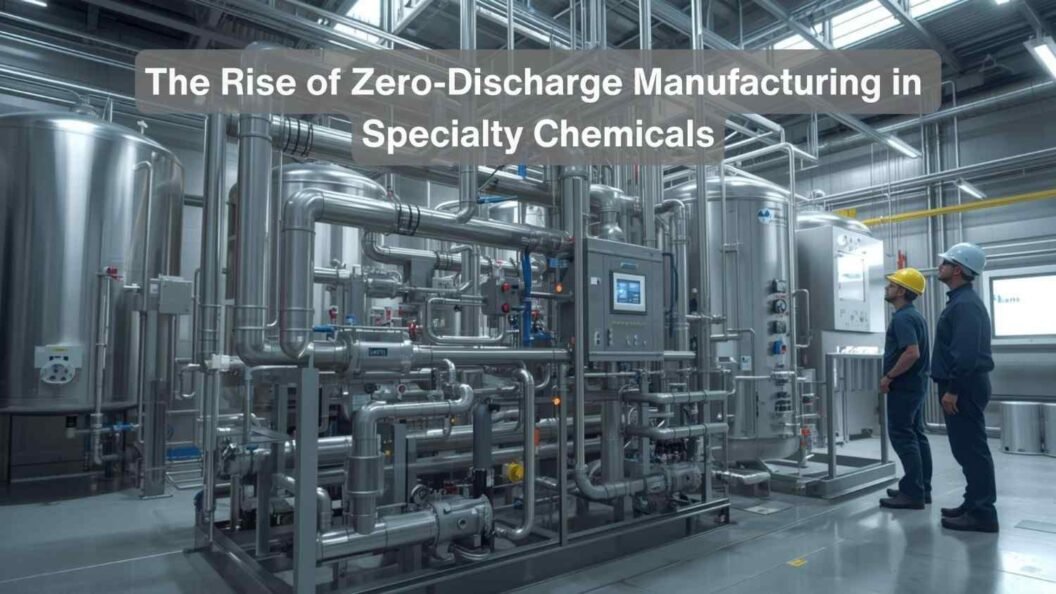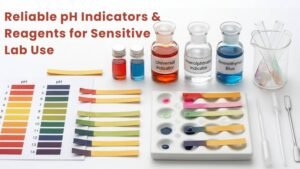In today’s fast-evolving chemical industry, sustainability is no longer just a buzzword; it’s a fundamental necessity. As global environmental concerns intensify, the specialty chemical sector is undergoing a remarkable transformation. Among the most significant advancements shaping the industry is the rise of zero-discharge manufacturing.
Zero-discharge manufacturing is revolutionizing how chemical plants operate by ensuring that no liquid waste or harmful effluent is released into the environment. This approach not only supports environmental conservation but also enhances efficiency, compliance, and brand credibility. Companies like GSP Chem, a trusted name in India’s chemical manufacturing landscape, are steadily aligning with this eco-friendly vision.
What Is Zero-Discharge Manufacturing?
Zero-discharge manufacturing, often referred to as Zero Liquid Discharge (ZLD), is a sustainable industrial process that aims to completely eliminate wastewater discharge. In this method, all liquid waste from production is treated, purified, and reused within the plant.
The core philosophy behind zero-discharge is “reuse, recycle, and recover.” Instead of letting effluents contaminate rivers, soil, or groundwater, the process ensures that every drop of water is reclaimed, leading to a closed-loop system that aligns perfectly with the principles of a circular economy.
Why Is Zero-Discharge Critical in the Specialty Chemical Industry?
The specialty chemical industry deals with complex formulations and high-precision processes involving dyes, indicators, reagents, surfactants, and catalysts. These processes often generate wastewater containing:
- Toxic organic compounds
- Heavy metals and solvents
- Acidic or alkaline residues
- Unreacted raw materials
If discharged untreated, these effluents can cause serious environmental damage. Zero-discharge manufacturing mitigates this issue by treating, evaporating, and recycling wastewater.
Key reasons driving this shift include:
- Stringent Environmental Regulations – Governments globally are tightening pollution norms for chemical plants.
- Resource Scarcity – Water scarcity in industrial zones demands efficient reuse and recycling.
- Corporate Responsibility – Stakeholders and customers expect chemical companies to operate sustainably.
- Cost Efficiency – Recovering valuable by-products and minimizing waste disposal expenses saves money long-term.
How Does Zero-Discharge Manufacturing Work?
Zero-discharge systems integrate multiple treatment and recovery technologies to ensure maximum water and resource recovery. The general process flow includes:
1. Pre-Treatment
Initial filtration removes suspended solids, oils, and large impurities from wastewater.
2. Biological Treatment
Microorganisms break down biodegradable organic matter, reducing biological oxygen demand (BOD) and chemical oxygen demand (COD).
3. Advanced Filtration Systems
Membrane technologies like ultrafiltration (UF) and reverse osmosis (RO) separate clean water from dissolved salts and chemicals.
4. Evaporation and Crystallization
Concentrated effluents are subjected to multi-effect evaporators (MEE) and crystallizers, which recover usable salts and pure water vapor.
5. Condensate Recovery
The condensed steam from evaporators is collected and reused in production or utility processes.
6. Solid Waste Management
The remaining solids are dried and safely disposed of or reused as industrial raw material.
This multi-layered approach ensures that no untreated liquid waste leaves the facility, making the process environmentally sound and resource-efficient.
Benefits of Zero-Discharge Manufacturing
The adoption of zero-discharge technology brings several advantages, both environmental and economic.
1. Environmental Protection
By preventing effluent discharge, zero-discharge systems protect water bodies and soil from contamination, preserving local ecosystems.
2. Water Conservation
Up to 95% of the wastewater generated in chemical plants can be recovered and reused, significantly reducing dependency on freshwater sources.
3. Regulatory Compliance
Zero-discharge manufacturing helps companies comply with CPCB, ISO 14001, and REACH guidelines, ensuring smooth audits and legal protection.
4. Cost Optimization
Though the initial investment is high, long-term savings are achieved through reduced water purchases, waste disposal costs, and penalty avoidance.
5. Brand Reputation and Customer Trust
In today’s eco-conscious market, customers prefer working with suppliers who prioritize sustainability. Implementing zero-discharge enhances brand image and credibility.
Challenges in Implementing Zero-Discharge Systems
While zero-discharge manufacturing offers clear benefits, its implementation comes with challenges that the industry continues to address:
1. High Capital Cost
The installation of advanced filtration and evaporation units requires significant upfront investment.
2. Energy Consumption
Evaporation systems consume large amounts of energy, increasing operational costs.
3. Complex Maintenance
The integrated systems demand continuous monitoring, skilled technicians, and frequent maintenance.
4. Sludge Management
Disposal of concentrated solid waste remains a concern for some industries.
Despite these hurdles, technological advancements in AI-driven monitoring, renewable energy integration, and membrane efficiency are making zero-discharge more viable and cost-effective each year.
Global Trends Driving Zero-Discharge Adoption
The rise of zero-discharge manufacturing is being accelerated by several global trends:
- Circular Economy Initiatives – Governments are encouraging industries to recycle and reuse resources to reduce waste.
- Green Chemistry – Companies are redesigning chemical processes to minimize hazardous outputs from the start.
- Digital Transformation – Smart sensors and data analytics are optimizing water treatment and recovery systems.
- Corporate ESG Goals – Investors are prioritizing environmentally responsible businesses with measurable sustainability results.
Together, these factors are making zero-discharge a standard practice rather than an optional initiative.
GSP Chem’s Commitment to Sustainable Manufacturing
As a leading specialty chemical manufacturer in India, GSP Chem recognizes its responsibility toward sustainable growth. The company has been integrating eco-friendly practices in its production and quality systems, from adopting green chemistry principles to optimizing resource use.
GSP Chem’s approach focuses on:
- Minimizing waste generation at the source
- Promoting water reuse through efficient treatment systems
- Using renewable energy wherever possible
- Training teams in sustainable operations
- Partnering with environmentally conscious clients and suppliers
By aligning with zero-discharge principles, GSP Chem reinforces its commitment to environmental stewardship, operational excellence, and long-term sustainability in the specialty chemical space.
The Future of Zero-Discharge in Specialty Chemicals
Zero-discharge manufacturing represents the future of industrial chemistry. In the coming decade, as environmental regulations tighten and resource constraints intensify, zero-discharge systems will become standard across chemical sectors.
Emerging technologies like nanofiltration, AI-based process optimization, and renewable-powered evaporators will make the systems more energy-efficient and scalable. Forward-thinking companies like GSP Chem that invest early in sustainability will not only gain compliance advantages but also lead the market with innovation and trust.








